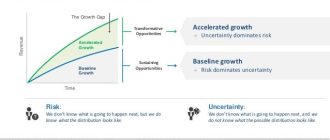When it comes to protecting your home, homeowners insurance is essential. While most people understand the importance of coverage for events like fire or theft, many homeowners are unaware of the coverage available for structural repairs.
Structural damage can occur due to a variety of reasons, such as severe weather, natural disasters, or even aging of the property. When these issues arise, having adequate insurance coverage can make all the difference in getting your home back to its pre-damage condition.
Insurance policies typically cover structural repairs resulting from events beyond your control, such as hurricanes, tornados, earthquakes, or even falling trees. Additionally, certain policies may include coverage for damages caused by plumbing leaks, electrical issues, or other internal structural problems.
It’s important to review your homeowners insurance policy to understand what is covered and what is not. Make sure to check the fine print and clarify any potential exclusions with your insurance provider. This will ensure you are fully protected in the event of structural damage.
Remember, taking proactive steps to maintain your property can also help prevent structural damage and potentially reduce insurance costs. Regular inspections, maintenance, and addressing any issues promptly can go a long way in protecting your home.
Don’t wait until it’s too late. Contact your insurance provider today to review your homeowners policy and ensure you have adequate coverage for structural repairs. Your home is one of your most valuable assets, so protect it with the right insurance coverage.
Importance of Homeowners Insurance
Homeowners insurance is an essential investment for anyone who owns a home. It provides financial protection in case of damage to your property or personal belongings. Without proper coverage, you could face significant financial losses.
One of the most important aspects of homeowners insurance is its coverage for structural repairs. Structural damage can occur due to a variety of reasons, including natural disasters, accidents, or wear and tear over time. Repairing or rebuilding a damaged structure can be extremely costly, but with the right insurance, you can have peace of mind knowing that you will be financially protected.
Additionally, homeowners insurance also provides coverage for personal liability. If someone gets injured on your property and decides to sue you for damages, your insurance policy will help cover the costs of legal fees and any settlements or judgments against you.
Another advantage of having homeowners insurance is that it often includes coverage for additional living expenses. If your home becomes uninhabitable due to a covered peril, such as a fire or severe storm, your insurance policy can help pay for temporary housing, meals, and other necessary expenses.
It is important to note that homeowners insurance is not only for the structure of your home. It also covers your personal belongings, such as furniture, appliances, electronics, and clothing. If these items are damaged or stolen, your insurance policy can help you recover their value.
Lastly, having homeowners insurance is often a requirement by mortgage lenders. If you have a mortgage on your home, your lender will likely require you to maintain a homeowners insurance policy to protect their investment in your property.
In conclusion, homeowners insurance is crucial for protecting your home, personal belongings, and financial well-being. It provides coverage for structural repairs, personal liability, additional living expenses, and more. Investing in homeowners insurance is a wise decision that can save you from significant financial hardships in the future.
Understanding Structural Repairs
When it comes to homeowners insurance coverage, understanding the specific coverage for structural repairs is essential. Structural repairs are often necessary due to various reasons, such as natural disasters, wear and tear, or accidents. Knowing what your policy covers and how to navigate the claims process can help you protect your home and finances.
Structural repairs can be costly and time-consuming, so it is crucial to have the right insurance coverage in place. Most homeowners insurance policies cover structural repairs caused by covered perils, such as fire, windstorms, hail, lightning, and explosions. However, it’s important to review your policy carefully to determine exactly what is covered under your specific plan.
When filing a claim for structural repairs, it is essential to document the damage thoroughly. Take photos and make a detailed inventory of any damaged areas, including walls, floors, ceilings, and the overall structural integrity of your home. This documentation will help support your claim and ensure that you receive the proper compensation.
Additionally, it’s important to understand the claims process for structural repairs. Contact your insurance company as soon as possible after discovering the damage, and they will guide you through the necessary steps. An adjuster will assess the damage and determine the cost of repairs, taking into account your policy coverage limits and any applicable deductibles.
It’s worth noting that some policies may have coverage limits or exclusions for certain types of structural repairs. For instance, damage caused by flooding or earthquakes may require additional coverage or a separate policy altogether. Understanding these limitations beforehand can help you assess your insurance needs and ensure you have the appropriate coverage in place.
Finally, consider working with a reputable contractor or construction professional for structural repairs. They can assess the extent of the damage and provide reliable estimates for the necessary repairs. Your insurance company may have preferred contractors that they work with or recommend, so it’s worth exploring those options as well.
Remember, understanding the specifics of your homeowners insurance policy and the coverage it provides for structural repairs is crucial. By being proactive and knowledgeable, you can ensure that your home is protected and that you are adequately compensated for any necessary repairs.
Identifying Structural Damage
Structural damage to your home can have serious consequences, both for the safety of your family and the value of your property. Identifying structural issues early on can help you address them before they become major problems.
Here are some signs that may indicate structural damage:
1. Cracks in the walls or foundation: Pay attention to cracks that are wider than a quarter inch or have a stair-step pattern. These can be a sign of a more serious issue.
2. Doors and windows that stick: If your doors or windows are suddenly difficult to open or close, it could be a sign that the structural integrity of the surrounding walls has been compromised.
3. Uneven floors: If your floors are sloping or sagging, it may be a sign of foundation problems or structural damage.
4. Leaning or bowing walls: Walls that are visibly leaning or bowing can indicate a serious structural issue.
5. Water damage: Water intrusion can cause structural damage over time. Look for signs of water stains, mold, or rot, particularly in basements or crawl spaces.
If you notice any of these signs, it’s important to consult a professional to assess the extent of the damage and recommend appropriate repairs. Addressing structural issues promptly can help prevent further damage and protect the structural integrity of your home.
Causes of Structural Damage
Understanding the causes of structural damage is essential for homeowners in order to protect their property and make informed decisions about homeowners insurance coverage. Structural damage can occur due to a variety of reasons, and it is important to identify and address these causes promptly to prevent further deterioration and costly repairs.
Natural Disasters
One of the leading causes of structural damage is natural disasters, such as earthquakes, floods, hurricanes, and tornadoes. These events can cause significant damage to the foundation, walls, and roof of a home, compromising its structural integrity.
Moisture and Water Damage
Excessive moisture and water damage can also lead to structural problems. Accumulated moisture can weaken wood, cause rot and mold growth, and compromise the stability of a home’s structure. Leaking pipes, faulty plumbing, or inadequate drainage systems can contribute to moisture-related structural damage.
Improper Construction or Design
Poor construction practices or design flaws can contribute to structural damage. Insufficient support, lack of reinforcement, or using substandard materials can compromise the strength and stability of a building. It is important to ensure that the construction and design of a home meet the necessary standards to avoid potential structural issues.
Foundation Problems
A damaged or unstable foundation can result in significant structural damage. Foundation issues can be caused by soil settlement, poor construction, water damage, or tree roots. Signs of foundation problems include cracks in the walls or floors, uneven doors or windows, and sloping or sagging floors.
Other Contributing Factors
Other factors that can cause structural damage include improper maintenance, termite infestations, fire damage, and accidents such as vehicle collisions. Regular maintenance, timely repairs, and obtaining appropriate homeowners insurance coverage can help homeowners address these issues and protect their property.
In conclusion, understanding the causes of structural damage is essential for homeowners to proactively safeguard their homes. By identifying and addressing these causes, homeowners can take the necessary steps to maintain the structural integrity of their property and ensure they have the appropriate homeowners insurance coverage to protect against potential damages.
Cost of Structural Repairs
When it comes to homeowners insurance coverage for structural repairs, understanding the cost is crucial. Structural repairs can be expensive, so having the right insurance coverage is essential to protect your investment.
Factors that Affect the Cost of Structural Repairs
The cost of structural repairs can vary depending on several factors, including:
- Extent of Damage: The severity of the damage will greatly impact the cost of repairs. Minor repairs, such as fixing a small crack, will be more affordable compared to major repairs, such as foundation damage.
- Materials: The materials used in the repair process can also affect the cost. Some materials are more expensive than others, so it’s important to consider the cost of materials when estimating the overall repair cost.
- Location: The location of your home can impact the cost of structural repairs. Labor and material costs can vary depending on the region, so it’s important to take this into consideration when budgeting for repairs.
- Permits and Regulations: Depending on the nature of the repair, permits and regulations may be required. These additional costs should be factored into the overall repair budget.
Importance of Adequate Insurance Coverage
Having adequate homeowners insurance coverage is essential when it comes to covering the cost of structural repairs. Without proper coverage, you may be left paying for repairs out of pocket, which can be a financial burden.
Before purchasing insurance, it’s important to carefully review the policy to understand the coverage limits and exclusions. Consider consulting with an insurance professional to ensure you have the right coverage for your specific needs.
Remember, the cost of structural repairs can be significant, so it’s essential to choose an insurance policy that adequately protects your investment and provides peace of mind in the event of any unexpected damage.
Types of Structural Repairs
When it comes to homeowners insurance coverage for structural repairs, it’s important to understand the different types of repairs that may be covered. Here are some common types of structural repairs that may be covered by your insurance policy:
- Foundation Repairs: If your home’s foundation is damaged due to factors like settling, soil issues, or water damage, your insurance policy may cover the cost of repairs. This can include leveling, crack repairs, and reinforcement.
- Roof Repairs: Roof damage caused by factors like high winds, hailstorms, or fallen trees may be covered by your insurance policy. This can include repair or replacement of shingles, tiles, or other roofing materials.
- Structural Frame Repairs: If your home’s structural frame is damaged due to factors like moisture, termites, or natural disasters, your insurance policy may cover the cost of repairs. This can include repairing or replacing beams, columns, or load-bearing walls.
- Wall Repairs: Damage to interior or exterior walls caused by factors like water damage, mold, or impact may be covered by your insurance policy. This can include repairing cracks, replacing damaged plaster or drywall, or repainting.
- Window and Door Repairs: If your windows or doors are damaged due to factors like storms, break-ins, or accidents, your insurance policy may cover the cost of repairs. This can include replacing broken glass, repairing frames, or replacing damaged doors.
It’s important to review your homeowners insurance policy to understand the specific types of structural repairs that are covered and any exclusions or limitations. Consulting with your insurance provider or an agent can help clarify any questions you may have.
Homeowners Insurance Coverage
Homeowners insurance coverage is a critical aspect of protecting your investment and providing peace of mind. Whether you are a new homeowner or have lived in your home for years, having the right insurance coverage can help safeguard your property against unexpected events.
Types of Coverage
There are several types of homeowners insurance coverage to consider:
- Dwelling Coverage: This type of coverage protects the physical structure of your home, including the walls, roof, and foundation. It helps cover the cost of repairs or rebuilding in the event of damage caused by covered perils, such as fire, hail, or vandalism.
- Personal Property Coverage: Personal property coverage helps protect your belongings, such as furniture, appliances, and electronics, in case of damage or theft. It’s essential to take inventory of your possessions and ensure you have adequate coverage to replace them if necessary.
- Liability Coverage: Liability coverage provides financial protection if someone is injured on your property and seeks compensation for medical expenses or other damages. It can also help cover legal costs in case of a lawsuit.
- Additional Living Expenses Coverage: If your home becomes uninhabitable due to damage from a covered event, additional living expenses coverage can help cover the cost of temporary accommodations, such as a hotel, as well as meals and other living expenses.
Factors That Affect Coverage
Several factors can influence the coverage options available to you, including:
- Location: The location of your home can impact the types of risks you are exposed to, such as hurricanes, earthquakes, or floods. Some perils may require additional coverage or separate policies.
- Home Value: The value of your home and its contents will determine the amount of coverage you need. It’s crucial to regularly review your policy limits to ensure they accurately reflect the current value of your property.
- Insurance Deductible: The deductible is the amount you are responsible for paying out of pocket before your insurance coverage kicks in. Higher deductibles can lower your premiums but also increase your financial burden in case of a claim.
- Claims History: Your claims history can impact your ability to obtain coverage and the cost of your premiums. If you have a history of frequent claims, insurers may view you as a higher risk.
It’s essential to review your homeowners insurance policy regularly to ensure it adequately protects your home and meets your needs. Consulting with an insurance professional can help guide you through the process and provide you with peace of mind.
Coverage for Structural Repairs
When it comes to homeowners insurance, one of the most important aspects is coverage for structural repairs. Whether you own a house or a condominium, having insurance coverage for structural repairs is vital in protecting your investment and ensuring peace of mind.
Structural repairs can be costly and unexpected, often resulting from sudden events such as storms, fires, or accidents. Without proper insurance coverage, you could be left with a significant financial burden in repairing or rebuilding your home.
What Does Structural Repairs Coverage Include?
Structural repairs coverage typically includes the cost of repairing or rebuilding your home’s foundation, walls, roof, and other structural components. This coverage extends to damages caused by natural disasters, accidents, or other covered events outlined in your policy.
Additionally, structural repairs coverage may also include coverage for damage to other structures on your property, such as garages, sheds, or fences. It’s crucial to review your policy carefully to understand what specific structures are covered.
Common Exclusions
While structural repairs coverage is comprehensive, it’s important to note that certain events may be excluded from your policy. Common exclusions may include damage caused by earthquakes, floods, or normal wear and tear.
If you live in an area prone to earthquakes or floods, it may be necessary to purchase additional coverage or a separate policy to protect your home against these specific events.
| What is Covered | What is Not Covered |
|---|---|
| Fire damage | Earthquake damage |
| Storm damage | Flood damage |
| Accidental damage | Normal wear and tear |
It’s crucial to consult with your insurance provider to ensure you have the appropriate coverage for any potential structural repairs your home may require. Review your policy regularly and make the necessary adjustments to ensure you are adequately protected.
With the right homeowners insurance coverage for structural repairs, you can have peace of mind knowing that your home is protected in the event of unforeseen damage. Don’t wait until it’s too late – protect your investment and secure your home today.
Coverage Limits
When it comes to homeowners insurance, it’s important to understand the coverage limits that are set in place. These limits determine the maximum amount an insurance company will pay for certain types of claims.
Dwelling Coverage Limit
The dwelling coverage limit refers to the maximum amount your insurance policy will pay for structural repairs to your home. This includes the cost of rebuilding or repairing the physical structure of your house if it is damaged or destroyed by a covered peril, such as a fire or severe weather.
It’s crucial to ensure that your dwelling coverage limit accurately reflects the current cost of rebuilding your home. This should take into account factors such as the size of your home, the materials used in its construction, and the local cost of labor and materials. If your coverage limit is too low, you may not receive enough money to fully rebuild your home in the event of a claim.
Other Structures Coverage Limit
In addition to the main dwelling, most homeowners insurance policies also provide coverage for other structures on your property, such as detached garages, sheds, or fences. The other structures coverage limit is typically a percentage of your dwelling coverage limit, usually around 10%. This means that if your dwelling coverage limit is $300,000, your other structures coverage limit would be $30,000.
If you have additional structures that are of higher value, it’s important to consider increasing your other structures coverage limit to ensure you have adequate protection in the event of damage or destruction.
Personal Property Coverage Limit
Your homeowners insurance policy also provides coverage for your personal belongings, such as furniture, clothing, and electronics. The personal property coverage limit is usually a percentage of your dwelling coverage limit, typically around 50%. For example, if your dwelling coverage limit is $300,000, your personal property coverage limit would be $150,000.
It’s important to take an inventory of your personal belongings and estimate their total value to determine if the default coverage limit is sufficient. If you own high-value items, such as jewelry or artwork, you may need to purchase additional coverage or separate policies to adequately protect them.
Remember, these coverage limits can vary depending on your specific insurance policy and provider. It’s important to review your policy documents carefully and consult with your insurance agent to ensure you have the right coverage limits in place to protect your home and belongings.
Deductibles
When it comes to homeowners insurance coverage for structural repairs, deductibles play a crucial role in determining the out-of-pocket expenses for the policyholder. A deductible is the amount of money that the homeowner must pay before their insurance coverage kicks in.
Homeowners insurance policies typically have two types of deductibles: fixed dollar amount deductibles and percentage deductibles. A fixed dollar amount deductible requires the policyholder to pay a specific dollar amount for each claim, whereas a percentage deductible is calculated based on a percentage of the insured value of the home or the claim amount.
Understanding the deductible is important because it directly affects the cost of the insurance premium. Generally, the higher the deductible, the lower the premium, and vice versa. A high deductible can result in lower monthly payments, but it also means that the homeowner will have to pay a larger portion of the repair costs in the event of a claim.
It’s crucial for homeowners to carefully consider their financial situation and personal preferences when choosing a deductible. If they have enough savings to cover a higher deductible, opting for a higher deductible could help lower their monthly insurance premium. On the other hand, if they prefer to have lower out-of-pocket expenses in the event of a claim, a lower deductible may be a better choice.
It’s important to note that deductibles usually apply separately to different types of claims. For example, if a homeowner has a $1,000 deductible and experiences both wind damage and water damage, they would need to pay the deductible for each claim separately. Therefore, it’s essential to review the policy terms carefully to understand how deductibles apply to different situations.
Lastly, it’s worth mentioning that some insurance policies offer deductible options that may be different from the standard deductibles. These options could include disappearing deductibles that decrease over time without any claims or higher deductibles for specific perils. Homeowners should consult with their insurance provider to determine if there are any deductible options available that align with their needs and preferences.
Exclusions and Limitations
While homeowners insurance coverage for structural repairs provides valuable protection, it’s important to understand that there are certain exclusions and limitations that may apply to your policy. These exclusions and limitations may vary based on your insurance provider and the specific policy you have chosen. Here are some of the common exclusions and limitations to be aware of:
1. Ordinary Wear and Tear
Homeowners insurance typically does not cover repairs or replacement due to ordinary wear and tear. This includes damage that occurs over time as a result of aging, use, or exposure to the elements. It’s important to regularly maintain your home to prevent or minimize wear and tear.
2. Maintenance and Upkeep
Homeowners insurance is not designed to cover routine maintenance or general upkeep of your home. This means that if a repair or replacement is needed due to lack of proper maintenance or neglect, it may not be covered by your insurance policy.
3. Certain Natural Disasters
While homeowners insurance typically covers damage caused by certain natural disasters, such as fire, storms, and hail, there may be limitations on coverage for other events, such as earthquakes, floods, or hurricanes. Consider purchasing additional coverage or a separate policy for these specific risks if you live in an area prone to such events.
4. Specific Exclusions
Insurance policies may have specific exclusions for certain items or events. For example, some policies may exclude coverage for damage caused by pets, mold, or acts of war or terrorism. It’s important to carefully review your policy to understand any specific exclusions that may apply.
Remember, reading and understanding your policy, including the exclusions and limitations, is essential to ensure you have the coverage you need and to avoid any surprises when it comes time to file a claim. If you have any questions or concerns, reach out to your insurance provider for clarification.
Wear and Tear
Over time, all structures experience wear and tear. Whether it’s due to natural aging or regular use, wear and tear can cause damage to various parts of your home. While homeowners insurance typically covers sudden and accidental damages, it may not cover damages that occur gradually due to wear and tear.
It’s important to understand the limitations of your homeowners insurance coverage when it comes to wear and tear. Most policies exclude coverage for damages that are considered normal wear and tear and are the result of typical use or aging of the home.
Examples of wear and tear damages that may not be covered by homeowners insurance include:
| Type of Damage | Explanation |
|---|---|
| Cracked foundation | Foundations can develop cracks over time due to natural settling or changes in soil conditions. These damages are typically considered to be a result of wear and tear and may not be covered. |
| Roof leaks | Roofs can deteriorate over time due to exposure to the elements. If your roof is damaged because of age or normal wear and tear, it may not be covered by your homeowners insurance. |
| Worn-out carpet | Carpeting in your home can wear out over time, especially in high-traffic areas. Replacing worn-out carpet is generally considered a maintenance expense and may not be covered by your insurance. |
To ensure you have the necessary coverage for wear and tear damages, it’s important to review your homeowners insurance policy carefully and consider additional coverage options if needed. Regular maintenance and proper upkeep of your home can also help prevent excessive wear and tear and minimize the risk of costly repairs.
Earthquakes and Floods
Earthquakes and floods are natural disasters that can cause significant damage to your home. Standard homeowners insurance policies typically do not provide coverage for damage caused by earthquakes or floods. Therefore, it is crucial to consider purchasing additional insurance coverage specifically for these types of events.
Earthquake Insurance
Earthquake insurance is a specialized policy that provides coverage for damage to your home and personal belongings caused by earthquakes. This type of insurance typically covers repairs to the structure of your home, as well as any damage to your belongings. It can also provide coverage for additional living expenses if your home becomes uninhabitable due to an earthquake.
When purchasing earthquake insurance, it is important to carefully review the policy to understand what is covered and what is excluded. Some policies may have a waiting period before coverage takes effect, while others may require a separate deductible specifically for earthquake damage. Consulting with an insurance agent can help you determine the best earthquake insurance policy for your needs.
Flood Insurance
Flood insurance is a separate policy that provides coverage for damage caused by floods. While many homeowners may assume that their standard insurance policy covers flood damage, this is usually not the case. Flood insurance is especially important if you live in an area prone to flooding, such as near a river or coastline.
Flood insurance typically covers damage to the structure of your home, as well as damage to your personal belongings. It can also provide coverage for expenses related to temporary living arrangements if your home is uninhabitable due to a flood.
It’s important to note that flood insurance policies are typically subject to a waiting period, meaning coverage does not take effect immediately after purchasing the policy. This waiting period varies depending on the insurance provider, so it’s crucial to plan ahead and purchase flood insurance before the flood season or if you are at risk of flooding.
Overall, earthquakes and floods can have devastating effects on your home. Understanding the limitations of your homeowners insurance policy and considering additional coverage for these specific events can provide you with peace of mind and financial protection.
Negligence
When it comes to homeowners insurance coverage for structural repairs, it’s important to understand how negligence can affect your policy. Negligence refers to the failure to take reasonable care or fulfill one’s duties, resulting in harm or damage to others or their property. In the context of homeowners insurance, negligence can play a significant role in determining coverage for structural repairs.
Types of Negligence
There are several types of negligence that may impact your homeowners insurance coverage:
- Gross negligence: This refers to a complete disregard or indifference to the safety and well-being of others. If structural damage occurs due to your gross negligence, your insurance provider may deny coverage.
- Comparative negligence: In cases where both you and another party are partially responsible for the structural damage, the concept of comparative negligence comes into play. Your insurance coverage may be reduced based on the percentage of fault assigned to you.
- Contributory negligence: Some states follow the doctrine of contributory negligence, which bars recovery for damages if the homeowner’s negligence contributed, even slightly, to the structural damage.
Exclusions due to Negligence
In many homeowners insurance policies, there are exclusions related to negligence. These exclusions may include intentional acts, illegal activities, and certain types of negligence that are deemed unacceptable by the insurance provider. It’s crucial to carefully review your policy and understand the specific exclusions related to negligence.
Additionally, if your insurance provider determines that the structural damage was caused intentionally or due to your negligence, they may deny coverage altogether. It’s important to maintain your property and take necessary precautions to prevent damage.
Claims Process in Cases of Negligence
If you need to file a claim for structural repairs due to negligence, it’s essential to follow the proper claims process. This typically involves documenting the damage, providing evidence of the negligence, and submitting a detailed claim to your insurance provider. It’s crucial to cooperate fully with your insurance company during the claims process, providing any requested information or documentation.
Keep in mind that the claims process for negligence-related structural repairs can be complex, and it’s advisable to consult with an experienced insurance professional to ensure you understand your rights and responsibilities.
In conclusion, negligence can have a significant impact on homeowners insurance coverage for structural repairs. Understanding the different types of negligence and the exclusions related to negligence in your policy is crucial to ensure adequate coverage when you need it most.







